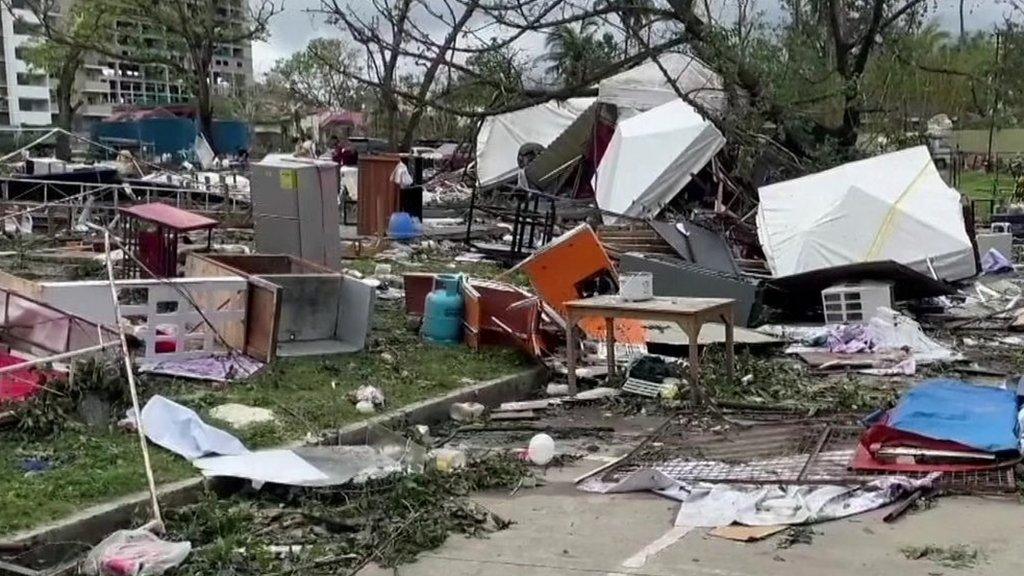Super Typhoon Rai: Dozens feared dead in Philippines
- Published
Watch this video that walks through the destruction caused by the typhoon in Cebu City
More than 30 people are feared dead and many are missing after a devastating storm swept over the Philippines.
Super Typhoon Rai crashed into the country's southeastern islands on Thursday, levelling homes and bringing winds of about 195km/h (120mph).
The strongest storm to hit the Philippines this year has toppled power poles, uprooted trees and left three million people without electricity.
The country's disaster agency says the reported death toll stands at 31.
Four people are confirmed killed and 27 are believed to have died, it said in a statement.
Rescue operations are now under way in the devastated regions.
There are growing concerns for the holiday island of Siargao, where the storm - also known as Typhoon Odette in the Philippines - first made landfall. Its governor said the island was "totally devastated" and estimated repair costs would be more than $400m (£302m).
And the governor of the neighbouring Dinagat islands, Arlene Bag-ao, said the region had been "levelled to the ground" by the typhoon.
"The fields and boats of our farmers and fisherfolk have been decimated," she said in a Facebook message quoted by news site Rappler, external. "[W]e have lost our homes. Walls and roofs were torn and blown off…. We have a dwindling supply of food and water. Electricity and telecommunications are down. This is why we urgently and humbly ask for everyone's help."
She said the damage "is reminiscent of, if not worse than, when Yolanda hit our province". More than 6,000 people died after that storm - also known as Typhoon Haiyan - hit the country in 2013.
On average about 20 storms and typhoons strike the Philippines each year.
The storm comes as the nation prepares for Christmas, a major holiday in the Philippines. More than 80% of the population declare themselves to be Catholic.
The latest update, external from the Philippine Atmospheric Geophysical and Astronomical Services Administration (Pagasa) said that while Typhoon Rai has now passed west of the island nation, it is intensifying again.
Current predictions suggest it will head towards Vietnam before turning north towards China, Pagasa said.


Typhoon Rai is the most powerful storm to hit the Philippines this year.
What makes this storm so significant is the power it sustained as it moved across nine different land masses in the Southern Philippines.
Island after island, from Siargao to Palawan - a distance of more than 800km (500 miles) - was battered by relentless winds and exceptionally heavy rainfall.
Charities here have been quick to link the storm's ferocity to global warming.
Greenpeace Philippines warned that "as the climate crisis worsens… these typhoons will get worse, more unpredictable, and more destructive."
The Philippine Red Cross called Rai a "monster storm" and expressed concern that climate change is making typhoons "more ferocious".
Although not as strong as 2013's Super Typhoon Haiyan, which killed more than 6,000 people and devastated vast tracts of land in the Philippines, Rai took many by surprise - strengthening to immense power in the final hours of its approach towards the country.

Related topics
- Published18 December 2021
